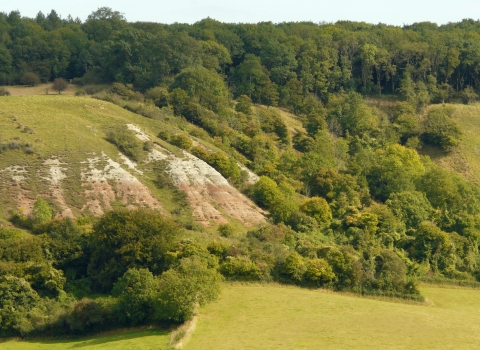
Blue Tit - Andy Rouse/2020VISION
Great Breach Wood
Know before you go
Dogs
Visit the 'Dog walking on reserves' page in the Contact section for more information.
When to visit
Opening times
Open at all timesBest time to visit
April to July, September to NovemberAbout the reserve
This wood has been very heavily influenced by humans. It was a 19th century oak plantation, some of which was subsequently clear-felled and replanted with conifers. The site has 170 county notable species, many nationally scarce invertebrate species and several Red Data Book beetles, moths and flies. An interesting ground flora more usually associated with ancient woodland sites has developed and over 600 species of fungi have been recorded.
Part of a network of Somerset Wildlife Trust nature reserves in the East Polden Hills, Great Breach Wood is a varied, but predominantly Oak and Ash woodland, with a rich scrub understorey and an extensive network of rides and glades.
Historical planting of non-native trees for commercial reasons has had an adverse impact on wildlife and the Trust is working to gradually remove species such as Lawson’s Cypress and Sitka Spruce. This will encourage natural regeneration of the native woodland and increase the amount of light let through to the forest floor. A few exotic trees which have some historical interest and which pose little risk of spreading like the giant Wellingtonia, are being retained.
An extensive network of open rides and glades is maintained throughout the wood. These support good numbers of moths, butterflies, grasshoppers, bumblebees and other insects, as well as providing corridors for wildlife and people to move around the site. In the spring and summer the glades are a riot of colour with Knapweed, Selfheal, Yellow Hawkbits and Cowslip, all vying for the sunlight. As summer progresses the glades come alive with Meadow Brown, Orange Tip and Marbled White butterflies and you can often see Silver-Washed Fritillaries feeding on bramble flowers along the rides. Sharp-eyed observers may be able to spot the occasional Purple Hairstreak butterfly high up in the Oak canopy.
The reserve is home to many woodland birds such as Blue and Great Tits, Nuthatch and Tree Creepers. Keep an ear out for the Lesser Spotted Woodpecker. Barely bigger than a Sparrow, these tiny birds make a lighter ‘tapping’ than the drumming of their Great-Spotted cousin which also breed here.
If you are lucky you may see Roe Deer moving along the rides. In early summer the doe leaves their young hidden away in the undergrowth whilst they feed, but the fawns instinctively stay so quiet and still that you are unlikely to be aware of them. As well as being a great place for woodland plants over 600 types of fungi have been recorded here.
Reserve conservation management - Historical planting of non-native trees for commercial reasons has been to the detriment of the site’s overall value for wildlife. We are therefore working to gradually remove species such as Lawson’s Cypress, Sitka Spruce and Beech encouraging natural regeneration of the woodland which then increases the amount of light let through to the forest floor. A few exotic trees which have some historical interest and which pose little risk of spreading uncontrollably, like the giant Wellingtonia, are being retained. An extensive network of open rides and glades is maintained throughout the wood. These support good numbers of moths, butterflies, grasshoppers, bumblebees and other insects, as well as providing corridors for wildlife and people to move around the site.
History and Archaeology - Copley House used to stand in the woodland here but it has long since disappeared, as have most traces of the site’s use as an army training camp during the Second World War. The Colston Obelisk, which commemorates a death in a hunting accident in 1852 and is a Grade II listed monument, stands as a reminder of those days.



